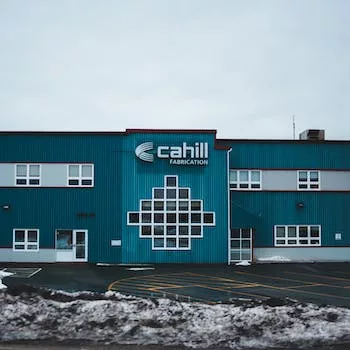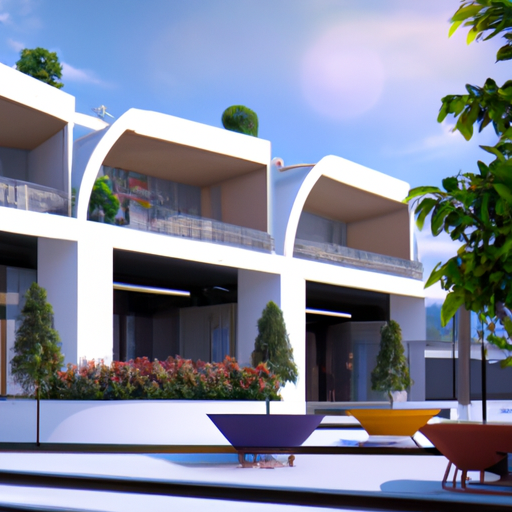Integrating Sustainability and Functionality in Large Community Complex Design
Designing a modern complex that caters to the needs of a large community is no easy task. It requires a delicate balance of sustainability and functionality, ensuring that the complex not only meets the needs of its residents but also minimizes its impact on the environment. In this article, we will explore some key considerations and strategies for achieving this balance, ultimately creating a complex that is perfect for a large community.
First and foremost, it is essential to consider the location of the complex. A well-chosen site can significantly reduce the environmental impact of the development, as well as improve the quality of life for its residents. Ideally, the complex should be located near public transportation, allowing residents to easily access essential services and amenities without relying on personal vehicles. This not only reduces greenhouse gas emissions but also promotes a healthier, more active lifestyle for community members.
In addition to its location, the design of the complex itself should prioritize sustainability. This can be achieved through the use of energy-efficient building materials and technologies, such as solar panels, green roofs, and high-performance insulation. These features not only reduce the complex’s carbon footprint but can also result in significant cost savings for residents in the long run.
Water conservation is another crucial aspect of sustainable design. By incorporating features such as rainwater harvesting systems, greywater recycling, and low-flow fixtures, the complex can significantly reduce its water consumption. This not only benefits the environment but also helps to ensure a reliable water supply for the community, particularly in areas prone to drought or water scarcity.
Of course, sustainability is only one part of the equation when designing a modern complex for a large community. Functionality is equally important, as the complex must meet the diverse needs of its residents. This can be achieved through the inclusion of a variety of amenities and facilities, such as communal spaces, recreational areas, and essential services.
Communal spaces, such as parks, gardens, and courtyards, provide residents with opportunities to socialize, relax, and enjoy the outdoors. These spaces should be designed with accessibility in mind, ensuring that they can be enjoyed by all members of the community, regardless of age or ability.
Recreational facilities, such as gyms, swimming pools, and sports courts, are also important for promoting health and well-being among residents. By providing a range of options, the complex can cater to the diverse interests and needs of its community members, encouraging them to lead active, healthy lifestyles.
Essential services, such as grocery stores, pharmacies, and healthcare facilities, should also be incorporated into the complex’s design. By ensuring that these services are easily accessible, the complex can help to promote a sense of self-sufficiency and convenience for its residents.
Finally, it is important to consider the needs of the community as a whole when designing a modern complex. This includes providing ample parking and transportation options, as well as ensuring that the complex is easily navigable for both pedestrians and vehicles. By prioritizing these aspects of the design, the complex can help to create a cohesive, well-functioning community that is both sustainable and functional.
In conclusion, designing a modern complex that is perfect for a large community requires a careful balance of sustainability and functionality. By considering factors such as location, energy efficiency, water conservation, and the diverse needs of residents, architects and developers can create a complex that not only minimizes its environmental impact but also provides a high quality of life for its community members. With thoughtful planning and design, it is possible to create a complex that truly meets the needs of a large community while also promoting a more sustainable future.
Creating Inclusive and Engaging Spaces for Diverse Communities in Modern Complexes

Designing a modern complex that caters to the needs of a large and diverse community can be a challenging task. However, with careful planning and consideration, architects and urban planners can create inclusive and engaging spaces that foster a sense of belonging and promote social interaction among residents. In this article, we will discuss some key principles and strategies that can help guide the design process for a modern complex that is perfect for a large community.
First and foremost, it is essential to understand the needs and preferences of the community that the complex will serve. This can be achieved through extensive research, surveys, and consultations with local residents and stakeholders. By gaining a deep understanding of the community’s demographics, cultural background, and lifestyle preferences, designers can create spaces that cater to the unique needs of the community and promote a sense of inclusivity.
One of the most important aspects of designing a modern complex for a diverse community is ensuring that the spaces are accessible to all. This means considering the needs of people with disabilities, seniors, and families with young children. For instance, incorporating ramps, elevators, and wide doorways can make it easier for people with mobility challenges to navigate the complex. Additionally, providing amenities such as playgrounds, parks, and community centers can cater to the needs of families and promote social interaction among residents.
Another key principle in designing a modern complex for a large community is creating a mix of public and private spaces. Public spaces, such as parks, plazas, and courtyards, provide opportunities for residents to gather, socialize, and participate in community events. On the other hand, private spaces, such as residential units and balconies, offer residents a sense of privacy and personal space. Striking the right balance between public and private spaces is crucial in fostering a sense of community while also respecting the need for privacy.
In addition to providing a mix of public and private spaces, it is also important to consider the overall layout and organization of the complex. A well-designed complex should promote walkability and connectivity, making it easy for residents to move between different areas of the complex and access essential amenities. This can be achieved by incorporating pedestrian-friendly pathways, bike lanes, and public transportation options within the complex. Moreover, clustering amenities such as shops, restaurants, and community centers in a central location can create a vibrant and lively hub that encourages social interaction and fosters a sense of community.
Finally, incorporating sustainable design principles and green spaces is essential in creating a modern complex that is not only visually appealing but also environmentally responsible. Green spaces, such as parks, gardens, and green roofs, can provide numerous benefits to residents, including improved air quality, reduced urban heat island effect, and opportunities for outdoor recreation. Additionally, incorporating sustainable design features such as energy-efficient building materials, solar panels, and rainwater harvesting systems can help reduce the complex’s environmental footprint and promote a sense of environmental stewardship among residents.
In conclusion, designing a modern complex that is perfect for a large and diverse community requires careful consideration of various factors, including accessibility, inclusivity, and sustainability. By creating spaces that cater to the unique needs of the community, promoting social interaction, and incorporating sustainable design principles, architects and urban planners can create a modern complex that fosters a sense of belonging and enhances the overall quality of life for residents.
Balancing Aesthetics and Practicality in Designing a Modern Complex for Large Communities
Designing a modern complex that caters to the needs of a large community is a challenging task that requires a delicate balance between aesthetics and practicality. Architects and urban planners must consider various factors, such as the needs of the residents, the available space, and the environmental impact of the complex. This article will discuss some key considerations and strategies for designing a modern complex that is both visually appealing and functional for a large community.
One of the primary concerns in designing a modern complex for a large community is ensuring that it meets the diverse needs of its residents. This includes providing a mix of housing options, such as single-family homes, apartments, and townhouses, to accommodate different family sizes and budgets. Additionally, the complex should offer a variety of amenities and services, such as schools, healthcare facilities, and recreational spaces, to cater to the needs of all age groups and interests.
In terms of aesthetics, a modern complex should be visually appealing and create a sense of identity for the community. This can be achieved through the use of innovative architectural designs, landscaping, and public art installations. The complex should also be designed with sustainability in mind, incorporating energy-efficient building materials and technologies, as well as green spaces and natural elements to promote a healthy living environment.
To ensure that the complex is practical and functional for its residents, it is essential to carefully plan the layout and organization of the various components. This includes designing efficient transportation networks, such as roads, pedestrian walkways, and bike lanes, to facilitate easy movement within the complex and to surrounding areas. Additionally, the complex should be designed with accessibility in mind, ensuring that all residents, including those with disabilities, can easily navigate and access the various facilities and services.
Another important aspect of designing a modern complex for a large community is fostering a sense of community and social interaction among residents. This can be achieved by creating communal spaces, such as parks, plazas, and community centers, where residents can gather, socialize, and participate in various activities. These spaces should be designed to be inviting and comfortable, with ample seating, shade, and lighting to encourage use throughout the day and evening.
In addition to the physical design of the complex, it is also important to consider the social and cultural aspects of the community. This includes incorporating elements that reflect the local culture and history, as well as providing spaces for cultural events and performances. By doing so, the complex can become a hub for community engagement and foster a sense of pride and belonging among residents.
Finally, it is crucial to involve the community in the design process, as their input and feedback can help ensure that the complex meets their needs and expectations. This can be done through public consultations, workshops, and surveys, allowing residents to voice their opinions and contribute to the decision-making process. By involving the community in the design process, architects and urban planners can create a modern complex that is not only aesthetically pleasing and practical but also truly reflective of the needs and desires of its residents.
In conclusion, designing a modern complex for a large community requires a careful balance between aesthetics and practicality. By considering the diverse needs of residents, incorporating sustainable and innovative design elements, and fostering a sense of community and social interaction, architects and urban planners can create a complex that is both visually appealing and functional for its residents. By involving the community in the design process, they can ensure that the complex truly meets the needs and expectations of its residents, creating a vibrant and thriving community that residents can be proud to call home.
Q&A
Question 1: What are the key elements to consider when designing a modern complex for a large community?
Answer 1: The key elements to consider when designing a modern complex for a large community include efficient land use, diverse housing options, accessibility, green spaces, community facilities, sustainable design, and safety and security measures.
Question 2: How can a modern complex promote social interaction and a sense of community among its residents?
Answer 2: A modern complex can promote social interaction and a sense of community by incorporating shared spaces such as parks, community centers, and recreational facilities, designing walkable streets and pathways, and organizing community events and activities.
Question 3: What sustainable design features can be incorporated into a modern complex to minimize its environmental impact?
Answer 3: Sustainable design features that can be incorporated into a modern complex include energy-efficient building materials and systems, green roofs and walls, rainwater harvesting, solar panels, waste management systems, and the use of native plants in landscaping.
Conclusion
In conclusion, designing a modern complex for a large community requires a well-thought-out plan that prioritizes sustainability, accessibility, and inclusivity. By incorporating green spaces, diverse housing options, efficient transportation systems, and a variety of amenities, the complex can cater to the needs of all residents and promote a sense of belonging and well-being. Additionally, incorporating smart technology and eco-friendly practices will ensure the complex remains environmentally responsible and future-proof.


